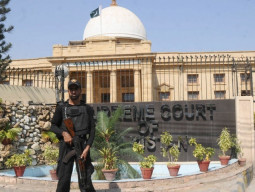

A nationwide strike by tens of millions of public-sector workers — always poorly paid — has cost the country around Rs180 billion. The finance and labour ministries attempted a last-minute heading off of the strike including a Rs104 rise in the minimum wage of unskilled workers but failed and most of the country came to a grinding halt.
This is no small event and although the strike was not universal, it covered enough of the country for India to be essentially paralysed. Whatever revolution Mr Modi is working for, its benefits have yet to trickle down to the majority of the population which, like that of Pakistan, is poor. The trade unions contend that Mr Modi’s policies are anti-worker and anti-people, and the picture of homogeneity that India likes to project to the world is deceptive. It does indeed shine in some parts — but by no means all and there are internal nationalist conflicts of a severity to rival those of Pakistan, religious and sectarian conflicts similarly. Public services are crumbling and many health workers have not been paid for months. Our neighbour is grappling with many of the same problems as we are — and with no more success in many ways, which takes the shine off a much-promoted package.
Published in The Express Tribune, September 5th, 2016.
Like Opinion & Editorial on Facebook, follow @ETOpEd on Twitter to receive all updates on all our daily pieces.

































COMMENTS (25)
Comments are moderated and generally will be posted if they are on-topic and not abusive.
For more information, please see our Comments FAQ